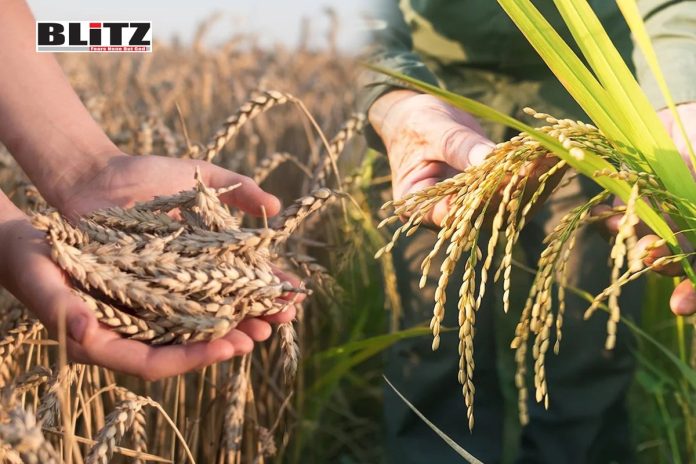Asia emerges as a cornerstone in the global pursuit of food security, buoyed by its substantial population, constituting roughly 60 percent of the world’s inhabitants. However, this demographic dominance juxtaposes with the sobering fact that Asia commands merely a third of the Earth’s arable land. Within this complex tapestry of demographics, environmental flux, and economic forces lies a landscape fraught with challenges yet ripe with potential. These factors intertwine to shape the narrative of food security across the continent and reverberate across the globe, encapsulating both daunting obstacles and promising pathways forward.
Over the span of decades, the invaluable contributions of scholars like Paul Teng, affiliated with Nanyang Technological University, have illuminated the intricacies of Asia’s food security landscape. Teng’s scholarly endeavors highlight pivotal junctures where factors such as dwindling agricultural productivity in South Asia intersect with the continent’s burgeoning economic prowess. This convergence acts as a clarion call, accentuating the profound ramifications that climate change and geopolitical upheavals, such as the Russia-Ukraine conflict, can have on global food markets. Teng’s research serves as a beacon, guiding efforts to navigate the complex terrain of ensuring food security in an ever-evolving world.
Understanding Asia’s pivotal role in enhancing global food security requires a nuanced grasp of the myriad factors shaping its food production and distribution systems. Despite its significant agricultural prowess, driven prominently by economic powerhouses like China and India, the continent contends with formidable internal pressures. The burgeoning middle class and rapid urbanization fuel an ever-growing demand for food within Asia itself, potentially curtailing the surplus allocated for export and echoing repercussions throughout international food markets. These internal dynamics underscore the intricate balance between addressing domestic requirements and upholding global obligations to ensure enduring food security.
Furthermore, Asia grapples with a myriad of pressing environmental challenges that imperil agricultural sustainability. Among these, water scarcity and land degradation loom large, casting a pervasive shadow over agricultural productivity in numerous regions. The looming specter of climate change exacerbates these issues, introducing shifting temperature patterns that pose a formidable threat to crop yields across the continent.
Addressing these multifaceted challenges necessitates a comprehensive and integrated approach that embraces innovation, collaboration, and strategic planning. Vital to this endeavor is the adoption of sustainable agricultural practices and the deployment of cutting-edge technologies. Initiatives such as precision farming, hydroponics, and vertical farming emerge as promising pathways forward, uniquely suited to circumventing the constraints imposed by arid climates and environmental degradation. By prioritizing these innovative solutions, Asia can fortify its food security resilience, ensuring the sustenance of its populations and fostering a more sustainable agricultural landscape for generations to come.
Efficient water management stands as a cornerstone in the quest for sustainable agriculture, facilitated by a repertoire of techniques including drip irrigation, desalination, and wastewater recycling. These approaches are pivotal in conserving precious water resources and bolstering agricultural output amidst escalating demands. Additionally, diversifying food imports and fortifying trade connections with diverse regions emerge as strategic imperatives to enhance resilience against geopolitical tensions and localized disruptions, thereby safeguarding the stability of global food supply chains.
Moreover, a concerted focus on research and development tailored to Asia’s unique challenges is paramount. This entails prioritizing initiatives aimed at cultivating heat and drought-resistant crops, thus fortifying the resilience of agricultural systems to climatic vagaries. Concurrently, investment in enhancing food storage, processing, and distribution infrastructures is indispensable. By minimizing waste and optimizing efficiency along the food supply chain, Asia can foster a more sustainable and robust food ecosystem, capable of meeting the needs of present and future generations amidst a rapidly changing world.
The impact of Asia’s food security extends well beyond its borders, resonating profoundly with regions such as the Middle East and North Africa, which heavily rely on food imports from the continent. Fluctuations in Asia’s food production and export policies can send reverberations across these distant lands, accentuating the critical need for sustainable and stable agricultural practices within Asia to safeguard global food security. The interconnectedness of food systems underscores the imperative for cooperative efforts and innovative solutions to mitigate risks and ensure resilience in the face of evolving challenges.
Asia’s pivotal role in the global food security landscape underscores the urgent need for concerted action to address the multifaceted challenges it confronts. By embracing innovation, fostering collaboration among stakeholders, and prioritizing sustainability, Asia can leverage its vast agricultural potential to strengthen global food security. However, realizing this vision necessitates sustained commitment and collective action from governments, businesses, and civil society actors across sectors and borders. Only through such collaborative endeavors can Asia contribute to a nourished and resilient future for all, ensuring food security for generations to come.




